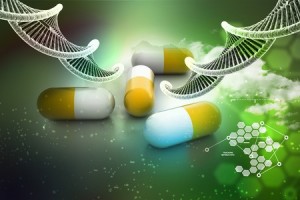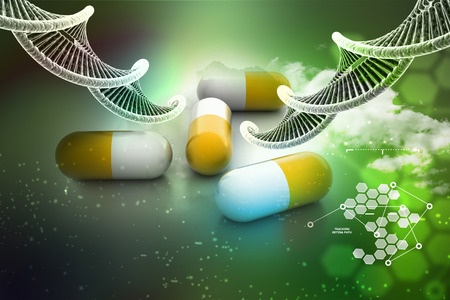
Ketamine is the new antidepressant darling, reportedly with relief in as little as 2 hours. In a previous article, “Falling Down the K-Hole,” I wrote about the use and potential problems of ketamine to treat depression. But as described below, there continues to be more to the ketamine family antidepressant story. There has also been an interest in developing ketamine-like substances, supposedly without the negative side effects. There are even ketamine treatment centers available, although insurance companies won’t pay for the treatment.
Ketamine Treatment Centers of Princeton promote ketamine to treat major depression, bipolar disorder, anxiety, PTSD and OCD. NY Ketamine Infusions offers ketamine infusion therapy to treat depression and chronic pain. One center said the potential for addiction is supposed to be minimized by administering ketamine in low doses in a medical setting, with infrequent dosing and no access of ketamine at home. Pause here for a minute and read between the lines of that last sentence before reading further.
Karl Jansen, a British psychiatrist and one of the world’s leading experts on ketamine, wrote Ketamine: Dreams and Realities. His work is a balanced pros-and-cons look at ketamine. He described multiple cases of ketamine addiction, stating: “Some users wish to return again and again, attempting to go further out and further in.” He indicated that tolerance is rapid and marked; and the ability to remember the experience fades. Yet there is little evidence of physical dependence on the drug. A few users will continue to take the drug for its cocaine-like effects, its calming effects, or its potential relief from anxiety, depression and craving. The fading of the psychedelic effects can lead to using higher doses of ketamine in order to resume its dissociation experience.
But there have been reports of ketamine psychosis. A 1994 study in the Archives of General Psychiatry (now JAMA Psychiatry) reported that ketamine produced behaviors similar to the symptoms of schizophrenia; and induced alterations in perception and symptoms similar to dissociative states. Jansen said:
Sometimes, ketamine can produce certain effects resembling psychosis. These effects can take a variety of forms. For example, the user may appear to be in a trance. Their eyes may move from side to side without seeing the external world. Limbs can move in strange ways and into bizarre postures. Despite an outward appearance of being “switched off” in some way, interviewing the person afterwards may show that the mind was staging an intense inner drama. While these people do not usually spring into action as may be seen in catatonic schizophrenia, they can suddenly sit up on the bed, speak a short phrase, and then lie down again without actually having “come ‘round.” Some people regard the odd movements and postures as a form of yoga and therapeutic bodywork. The “traveler’s tales” on their return, are often very different from the accounts typically linked with schizophrenia. Many users are absolutely convinced that their ketamine experiences were real.
Ketamine was first synthesized in 1962 by a Parke Davis pharmacist; patented in 1963; and found to be a useful anesthetic in 1965, the year it also became known as a potent psychedelic. Parke Davis patented it as an anesthetic in 1966. In the late 1960s, it was first used as a field anesthetic during the Vietnam War. It is also on the WHO list of essential medicines for a health system. It was classified as a Schedule III controlled substance in 1999.
There are reports of ketamine-related fatalities, but ketamine as the sole cause of death is rare. There have been a few reports, like this 2004 article in the Journal of Analytical Toxicology, where two men apparently died from ketamine intoxication. In 2002, an article in the International Journal of Legal Medicine reported that an EMT was found dead by his girlfriend as a result of a fatal combination of ketamine and suffocation during autoeroticism.
D.M. Turner, in The Essential Psychedelic Guide, wrote that a major concern with the safe use of ketamine was its very high potential for psychological addiction. He said that he knew several regular psychedelic drug users who never had problems controlling their use. But they would consume ketamine non-stop until their supply was exhausted. “I’ve seen very few who can use it in a balanced manner if they have access to it.” Turner’s death by drowning in 1996 was ketamine-related.
In a 2014 animal study, Gideons et al. compared the effectiveness of ketamine to another NMDA receptor antagonist, memtamine. Despite their similar potency as NMDAR antagonists, memtamine does not exert rapid antidepressant effects. Their study confirmed previous research showing this difference between ketamine and memtamine. They also discovered some differential functional effects between the two drugs that provided insight into why ketamine and not memtamine has a rapid antidepressant action.
Sanacora and Schatzberg said in their 2015 article in Neuropsychopharmacology that there was now incontrovertible evidence that single dose intravenous ketamine was associated with an improvement in depressive symptoms that could last several days. However, the actual mechanisms at work to produce the effect remained unclear. Conventional wisdom suggested that the effects of ketamine on the NMDA receptor produced the antidepressant effect. Other studies have shown several drugs that act as NMDAR antagonists with antidepressant-like effects. They also acknowledged that ketamine can produce dissociation and psychosis.
Overall, the combined data from preclinical and clinical studies using a variety of different NMDAR modulating drugs provide generally consistent evidence that antidepressant effects are associated with NMDAR antagonism, and that this is probably the primary mechanism through which ketamine is generating its antidepressant effects.
A molecular cousin to ketamine, GLYX-13 (Rapastinel), has been shown to induce antidepressant results similar to ketamine without the side effects of hallucinations, excessive sleepiness and substance abuse behavior. A study by Joseph Moskal, a molecular neurobiologist at Northwestern University, showed that GLYX-13 and ketamine produce rapid acting antidepressant-like effects in rats that lasted for 24 hours. Moskal is the Founder and Chief Scientific Officer for Naurex, the pharmaceutical company developing Rapastinel.
In February of 2014, the FDA granted fast track status to Rapastinel. Naurex, reported that Phase 2 clinical studies showed patients with major depression had a significant reduction of depressive symptoms within two hours that lasted seven days with a single dose. Repeated dosing achieved a clinically meaningful reduction in depressive symptoms that lasted ten weeks after the last drug dose. Naurex expects to begin Phase 3 clinical trials in 2015. Clinical trails are now recruiting participants to assess the effects of GLYX-13 on individuals with OCD and learning and memory in both healthy individuals and those diagnosed with Schizophrenia of Schizoaffective Disorder.
Johnson & Johnson is developing esketamine, another ketamine knock-off, and hopes to seek FDA approval in 2018. But Clinical Trails.gov, accessed in June of 2015, indicated the study for estketamine was not recruiting participants yet. Doctor Sanacara was quoted in an NPR story as saying: “I think it’s highly probable that we’ll see some version of one of these treatment being approved in the relatively near future . . . In my mind it is the most exciting development in mood disorder treatment in the last 50 years.” Sanacora has done consulting work for both Naurex and Johnson & Johnson.
The rhetoric on the clinical trials through Phase 2 for Rapastinel and esketamine sounds promising, but let’s take a wait-and-see attitude. Their molecular cousin, ketamine, has some seriously bad side effects. One question to be asked is whether or not these medications will be classified as controlled substances, as ketamine is. I think we’ll need to see whether, despite all the assurances, Rapastinel and esketamine act out just like their cousin. Like human families, bad behavior runs in pharmaceutical families.





